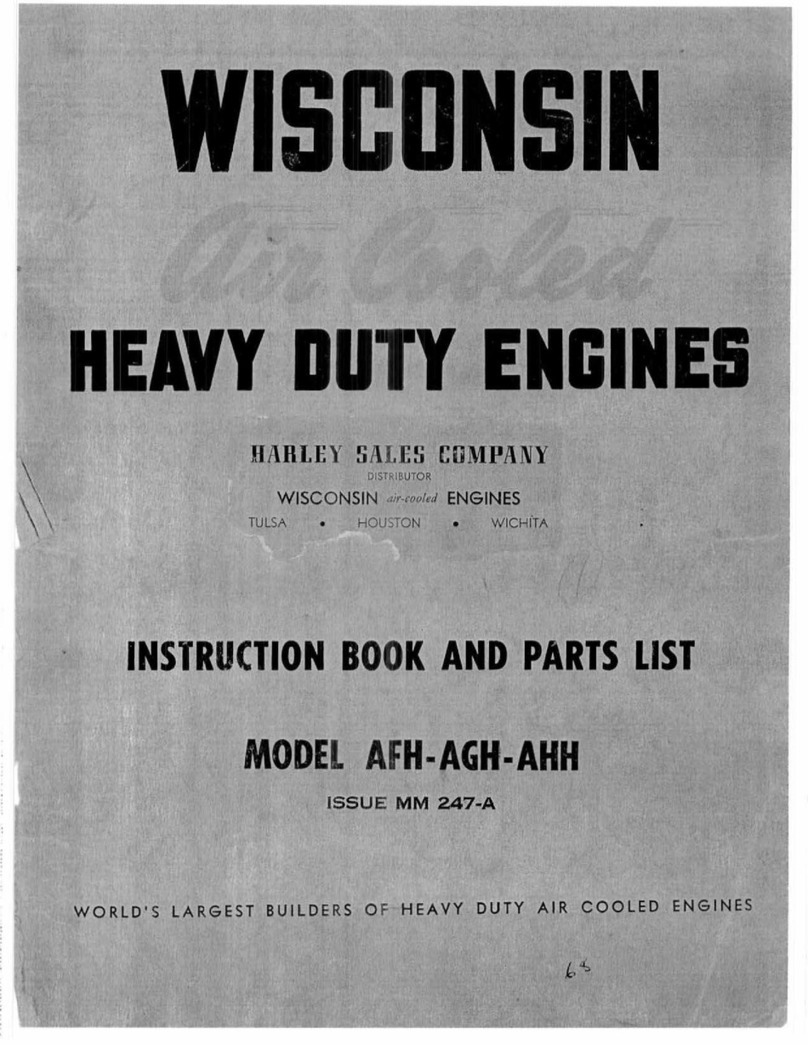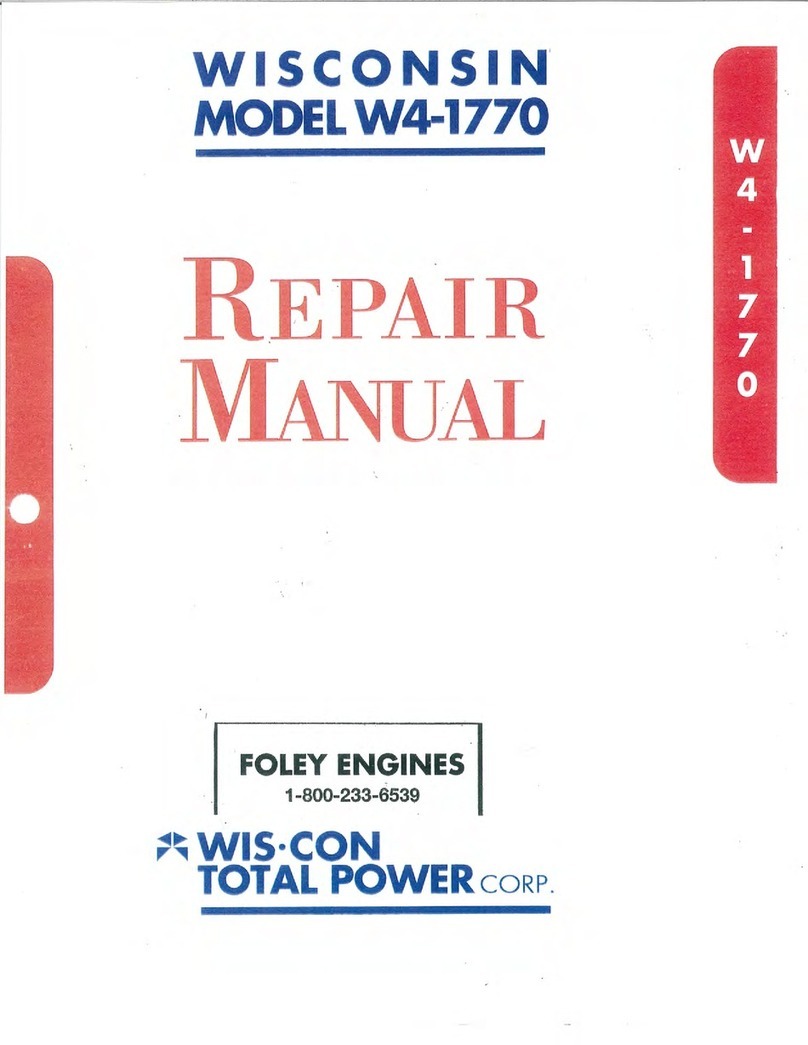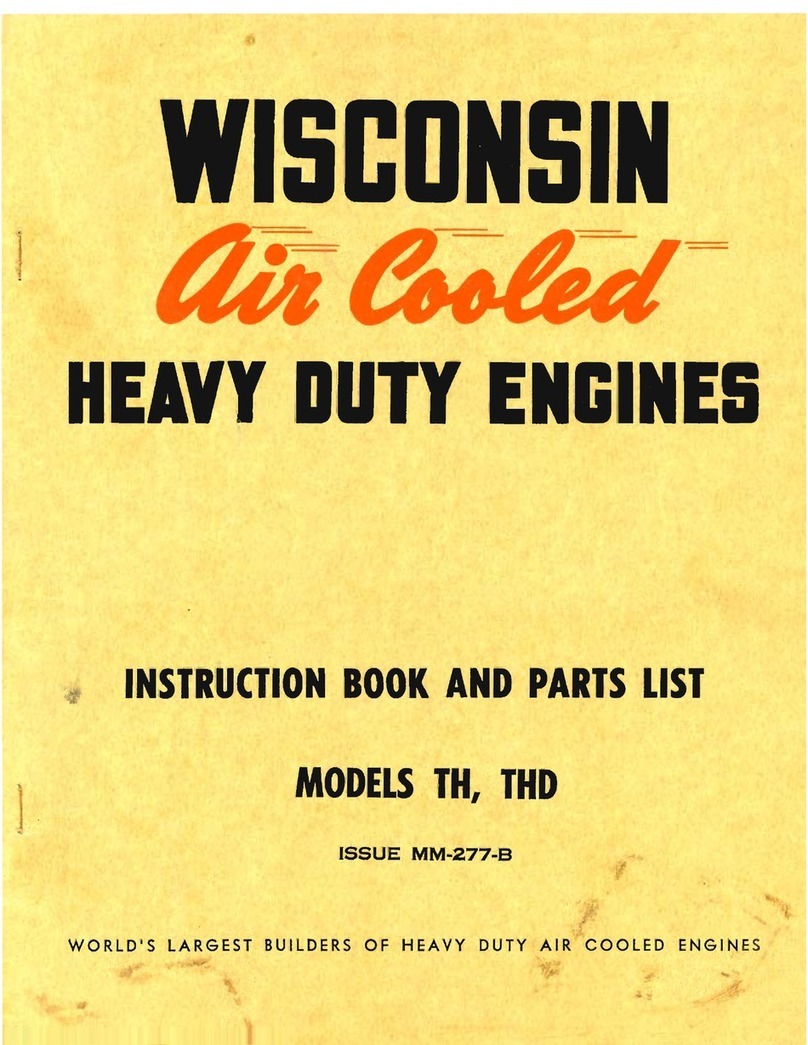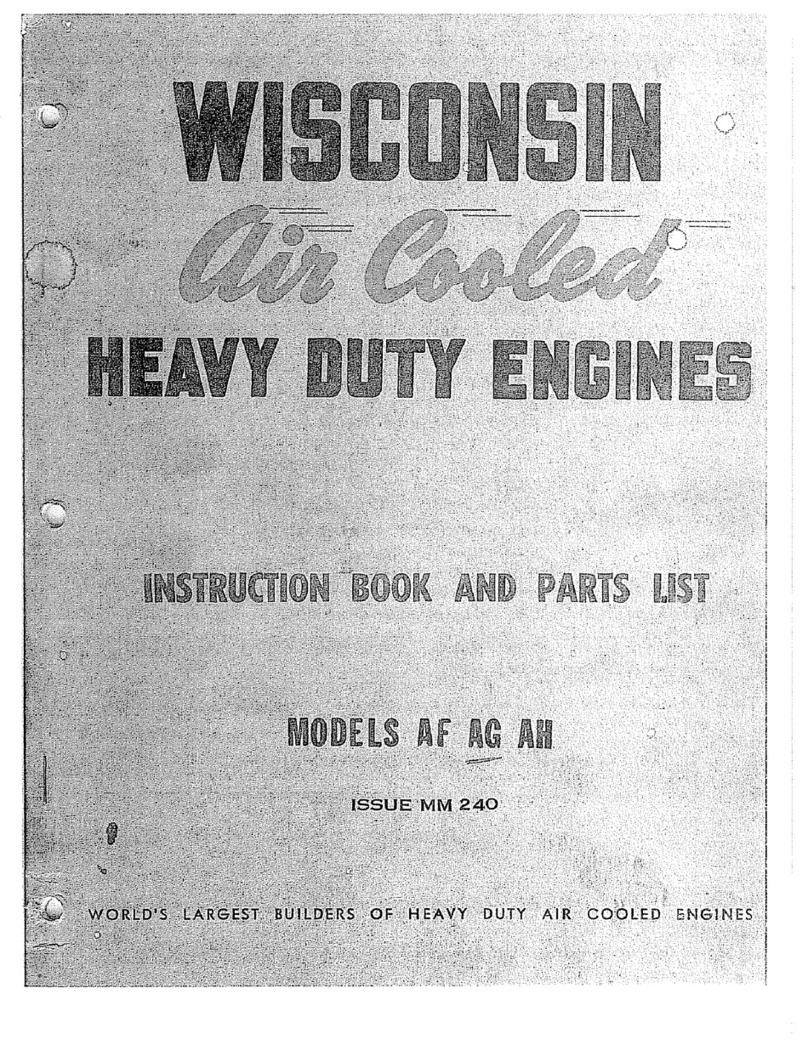IMPORTANT SAFETY NOTICE
Properrepair is importantto the safeandreliable operationof anengine.ThisRepairManual
outlines basicrecommendedprocedures,someof whichrequirespecialtools, devicesor work
methods.
Improperrepair procedurescanbedangerousandcouldresult in injury or death.
READANDUNDERSTANDALL SAFETYPRECAUTIONSAND
WARNINGSBEFOREPERFORMINGREPAIRSON THIS ENGINE
Warninglabels havealsobeenput onthe enginesto provideinstructionsandidentify specific
hazardswhich,if not heeded,couldcausebodilyinjury or deathto youor otherpersons.These
labels identify hazardswhichmaynot beapparentto a trained mechanic.Thereare many
potential hazardsfor anuntrainedmechanicandthereis nowayto label the engineagainstall
suchhazards.Thesewarningsin the RepairManualandonthe engineare indentified bythis
symbol:
z WARNING
Operationsthat mayresult onlyin enginedamageare identified in the RepairManualbythis
symbol: CAUTION
WisconsinMotors,LLCcannotanticipate everypossiblecircumstancethat mightinvolve
apotentialhazard;therefore,thewarningsin this manualarenotall inclusive.If a procedure,
tool, deviceor workmethodnot specifically recommendedby Wisconsinis used,youmust
satisfy yourselfthat it is safefor youandothers.Youshouldalso ensurethat the engine
will not be damagedor madeunsafeby the proceduresyouchoose.
IMPORTANT:Theinformation, specifications andillustrations in this manualare based
oninformation that wasavailable at the time it waspublished. Thespecifications,
torques, pressuresof operation, measurements,adjustments,illustrations andother
items can changeat any time. Thesechangescan affect the service given to the
product. Getthe completeandmostcurrent information before starting any job. For
parts, service, or information, contract WisconsinMotors,LLC,Memphis,Tennessee.




































